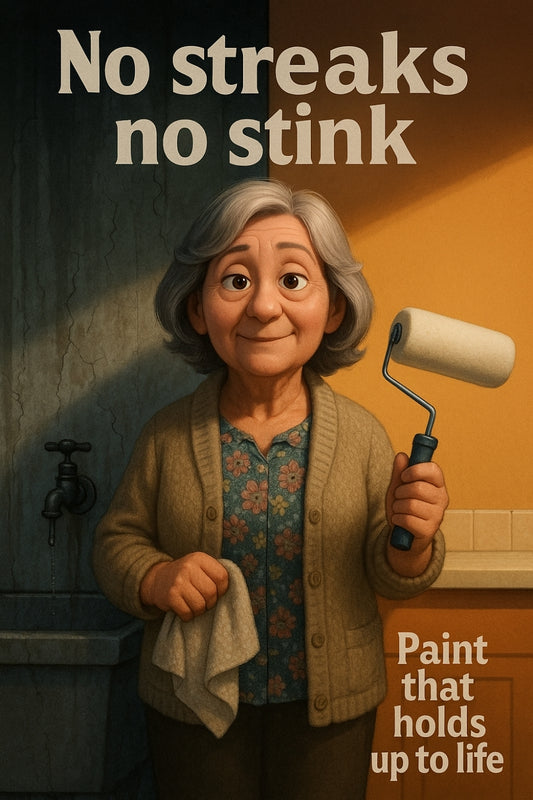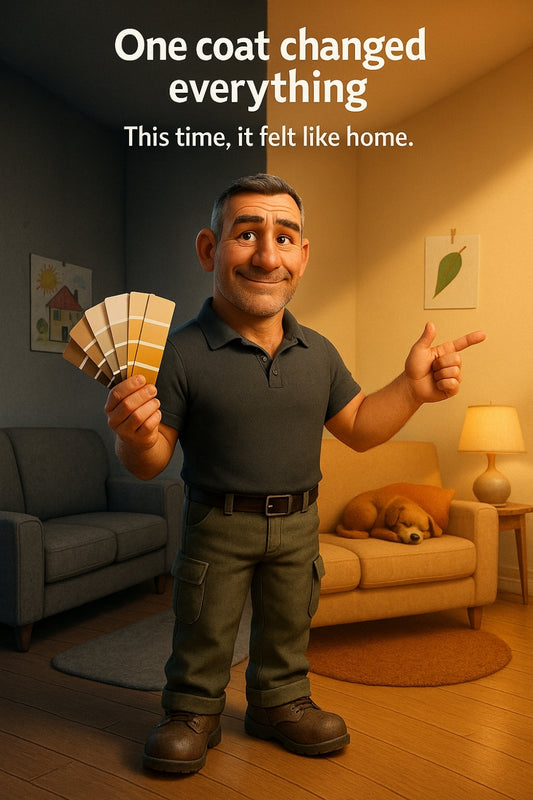
Haymes says prime first—your walls will thank you, your colour will sing, your finish will last.
Share
Why Your Paint Job Might Fail Without This Step
Before the paint goes on, there’s a quiet hero underneath it all—your primer. But not just any primer. Picking the wrong one can leave you with peeling corners, patchy walls, or stains bleeding through like bad memories. The right one? It locks everything in.
Choosing Between Haymes Ultralock, Ultraseal & Ultrahold
These top three primers from Haymes aren't lookalikes—they're specialists. And when used right, they save you hours of sanding, re-coating or worse—starting from scratch.
“Prep properly and your paint will thank you every day,” says one of our long-time locals, who learned that lesson the hard way after painting over a waterstained ceiling without sealing it first. Twice.
What Each Primer Actually Does
1. Ultralock: For Surfaces You Weren’t Meant to Paint
Ever tried painting glass, tiles, laminate or metal? Normally, paint would slide right off. But Haymes Ultralock grips to glossy, non-porous surfaces like a second skin, giving you a lasting finish you can trust.
- Great for surfaces like bathroom tiles or shiny cabinetry.
- Sticks to glossy surfaces without sanding first.
- Fast-drying and low odour.
Pro tip: Give it a light clean with sugar soap first, then roll on Ultralock and let it cure. You’ll be amazed what it holds onto.
2. Ultraseal: For When Life Leaves a Mark
Water marks, smoke stains, writing-on-the-wall moments—Ultraseal shuts them all down. It’s your go-to for sealing off drama before it resurfaces through fresh topcoat.
- Stain-blocking formula seals in odours and marks.
- Works on plaster, brick, masonry, and more.
- Helps create a uniform undercoat for lighter paint colours.
We’ve had DIYers use Ultraseal on small ceilings post-roof leak and swear it saved the whole room repaint.
3. Ultrahold: For Timber That Bleeds
Some timbers (like pine or cedar) just won’t sit quietly under paint. Their natural tannins bleed through, especially under pastel or white colours.
- Designed especially for tough-to-coat timber surfaces.
- Stops tannin bleed in its tracks.
- Perfect for furniture flips or VJ panel walls.
Ever painted an old timber dresser and watched it turn pink? Ultrahold would’ve shut that down before it started.
When to Use Which One?
Here’s a quick decision guide:
- Got glossy tiles or laminate? → Ultralock
- Dealing with stains or smells? → Ultraseal
- Painting raw or oily timber? → Ultrahold
Each one’s job is unique—and trying to cut corners with the wrong one only means extra coats later.
What Happens If You Skip Primer?
Let’s not sugar-coat it. If you skip the priming step altogether, here’s what you risk:
- Paint peeling within months
- Stains reappearing under new coats
- Blotchy, uneven colour application
- Time (and money) wasted doing it all over again
Primers might not be the exciting part of the job—but they’re often the part that determines how it ends.
This Isn’t Just Prep. It’s Peace of Mind.
There’s something deeply reassuring about brushing on that primer, knowing you've nailed the foundation. It removes the risk. It takes the pressure off the final coat. And honestly, there’s nothing better than a wall that stays crisp, calm and covered—long after the brush is washed out.
So whether you’re rescuing a smoke-stained nook, flipping a Marketplace cube storage into a feature piece, or finally painting that weird glossy brick arch, the right Haymes primer makes all the difference.
Got questions about what will stick or what needs sealing? Drop into the shop—or bring a photo! Seeing the surface helps us steer you right the first time.
Here’s to painted spaces that stay beautiful—and jobs that only need doing once.
—Candeece

Stay Connected
Follow our Facebook Page: Strathalbyn H Hardware on Facebook



